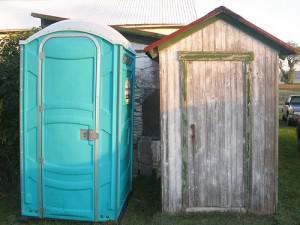 A few months back I had the opportunity to tour three LEED certified projects on three consecutive days. All three projects achieved LEED gold and were located in the greater Denver area. The following op-ed is a bit of a reflection on these visits and what it means to build green. They are listed in reverse chronological order to demonstrate the lessons I learned.
A few months back I had the opportunity to tour three LEED certified projects on three consecutive days. All three projects achieved LEED gold and were located in the greater Denver area. The following op-ed is a bit of a reflection on these visits and what it means to build green. They are listed in reverse chronological order to demonstrate the lessons I learned.
The school I visited sits on a 35-acre parcel of land located off the road leading to the airport. Prior to the school, there were no buildings on the site. I believe it was a meadow. This type of development, often referred to as greenfield – because it builds on previously undeveloped land – is often associated with sprawl. Brownfield development – land that was previously developed – often fills in pockets of underutilized land, helping to increase density.
My second visit was to the EPA’s Region 8 headquarters in Denver. This building sits on the grounds of the formal postal annex which was constructed in 1959 and before that a warehouse similar to one that still stands across the street and houses the Alliance Center for Sustainable Colorado. While the new EPA building is a beautiful, gleaming structure with lots of natural light, it does not change the fact that there have been three buildings over the same time frame that another one, currently LEED-certified former warehouse, has stood across the street.
The warehouse was the first building I visited chronologically (the home of the Alliance Center for Sustainable Colorado; reviewed last year after the first time I toured the facility), but I save it for last. It is not a gleaming structure like the EPA; it is rather pedestrian looking. As one of my students (I took my entry level environmental science lab section on the tour) pointed out in their reflection, I never realized that an ordinary building could be green. If it is true that the greenest buildings are those that are already built, it is imperative that existing buildings be preserved and retrofitted for energy efficiency and sustainable materials.
Consider the resources (including time, money, and materials) need to construct a new building. Add to this the waste, even if it is recycled, generated from the demolition of the previous structure, and new buildings require an awful lot of start up capital. On top of this, a greenfield development takes land that could potentially be used for food production, aesthetic, recreational, or an assortment of other purposes and you’ve got a question of what is the best use of land.
Be intentional when designing a building, but also think about the structures that are already in place, previously abandoned sites, and what is necessary. On occasion a building is not viable and can be beyond saving, but that is a last ditch approach. After all, we need to look backward as we move forward.
[Image source]

